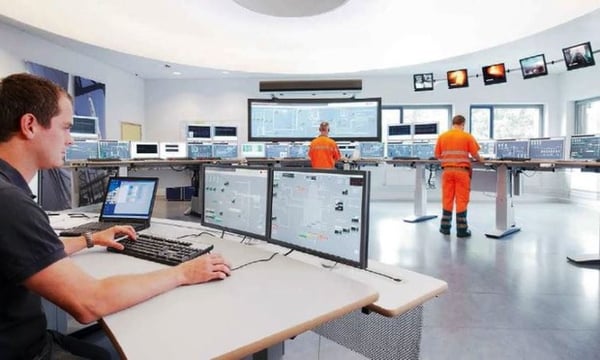Many operators are looking into moving control from local facilities to more centralised operation centres, either as part of restructuring their operational strategy, as a result of a strategy, a change program or a drive to make their operation more efficient. When you are preparing the move from local to remote operation, there are plans and preparations needed to be made. These are related to organisation, technical solutions, the current state of the site, and the strategy that lies at the bottom.

On the organisational side, there will likely be big changes for many people, which needs to be addressed as early in the process as possible. The challenges here can be many, but not necessarily difficult to manage. Many tasks traditionally performed by humans are already being replaced by machines, and many humans are already using new technology that relieve them of tedious routine work. It’s all about involvement and embracing the opportunities that comes with new and improved technology, rather than just pointing out positive or negative sides. When people are involved in the change processes, they tend to move forward more smoothly and quickly, and not least – the processes gain important insight from those closest to the sharp end.
That said, the changes will likely lead to more challenges that must be addressed:
- The feeling of lost security or reduced safety
- The fear of losing control
- The fear of change
How do we act on these challenges?
There are established and proven methods for projects like these. For control centres in particular, the ISO 11064 outlines methods for developing proper and functioning control centres, although it’s not comprehensible and lacks in some areas. However, by following the general principles mentioned in ISO 11064, the method will be a base for the management of a local to remote project.
The core principle that is the basis for many of the necessary processes is user involvement. This cannot be repeated often enough. The key to success is to involve the end users, to make sure they know what’s going on, ensure that their insights and experience is included, and that they have real ownership to the project. When everyone is playing in the same team, it’s a lot more constructive and creative than having one side competing against the other.
To achieve this, information about the processes and of the strategy is paramount. A sound strategy that is communicated to the involved parties will get you a long way and ensure you start off on the right track, which improves your chances of success.
 Image by Process Engineering
Image by Process Engineering
Planning for the changes
Current national rules and regulations as well as company standards, will impact the strategy and planned solutions. These will form a basis for the plan, along with the operational philosophy for the site. Some preparations include various human factor analyses, studies and reports, based on the current state of the site. These will in turn be input to new strategies, descriptions, and functional requirements for the remote operation centre. Some areas may need involvement from expertise, either internal or external, and other areas may require regular involvement of different personnel. It is important to identify the potential stakeholders at an early stage, and to ensure their active involvement throughout the process.
 Martin Linge image by Jan Arne Wold, Bo B. Randulff/Equinor
Martin Linge image by Jan Arne Wold, Bo B. Randulff/Equinor
Running the project
The ISO 11064 method of iteration, verification, and validation should be followed throughout the project lifecycle, ensuring that all solutions and concepts are thoroughly evaluated and discussed with all involved parties.
This method is also designed to capture the challenges mentioned previously, giving users the chance to challenge and raise questions during the change process, and to contribute with their insight and experience during the project.
In change processes like this, it’s important to focus on the people. Even if the project seems to be a high-tech wonder of new equipment and tools, it will be people who operate the technology. Therefore, it’s not about what your people can do with the new technology, but rather how the new technology can make your people better. The technology needs to be adjusted to fit the organisation, and the people need to have ownership of the technology.
On the technological and physical side, there are also areas that need special attention, some of which are infrastructure redundancy, system up-time and resilience, safety, security, accessibility and availability. By moving parts of, or the whole operation to another location, there will be different challenges and issues that need new solutions. Some rules and regulations will differ between on- and offshore, and some will remain valid for both. In most cases the most stringent rules and regulations will apply.
Moving forward
As you might understand, there are a lot of elements to consider in the transition from local to remote control. However, structuring the way you plan, using proven tools and methods, and taking all parts of your operation into consideration will drastically improve your chances of success and will make it less difficult for you to go from local to remote operation.